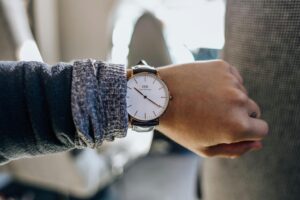Spotting fake designer products isn’t as easy as it used to be. Years ago, you could tell from bad stitching or flimsy hardware. Today, many counterfeits look almost perfect. They mimic every little detail—right down to the tags, serial numbers, and packaging.
Even trained experts sometimes miss them. That’s not because they’re not good at their job—it’s because fakes have become extremely convincing.
So, the question is: Can AI detect fake designer products better than experts? Yes, and here’s how it works—without guesswork, bias, or fatigue.
Where Human Authentication Often Falls Short
Most authentication today still relies heavily on people. Whether it’s a brand’s in-house expert or a resale platform’s specialist, manual checks to detect fake designer products usually include:
- Inspecting stitching, logos, labels, and fabric
- Comparing color codes and materials
- Verifying serial numbers or production stamps
- Looking for signs of wear or inconsistencies
But this approach has limits.
1. Counterfeits are now hyper-realistic
Fake items are produced using high-end machines, real leather, and copied fonts. They can replicate even the smallest visual cues that humans typically rely on.
2. Human checks are subjective
Two experts might disagree on the same item. One could call it authentic, while the other raises doubts. It’s often about gut feeling and experience—and that’s not always reliable.
3. Expertise doesn’t scale
An expert can check maybe 10–15 items per hour thoroughly. That doesn’t work at scale—especially on fast-moving resale platforms where thousands of items are listed daily.
How AI Works Differently—and More Precisely
Instead of relying on visual memory and subjective judgment, AI uses hard data. AI models trained on real and fake items learn to detect differences that humans can’t easily see.
But Trulux takes this even further.
Their authentication platform combines AI with multimodal sensing—a method that gathers detailed information from different types of sensors, not just images to detect fake designer products.
This includes:
- Microscopic surface structure analysis
- Light interaction patterns (how the material reflects under specific lighting)
- Depth mapping and stitching precision
- Material signature readings using light spectrum and sensor data
So instead of a human saying “this feels off,” Trulux’s system knows exactly what’s off—down to nanometer-level irregularities.
What Is Multimodal Sensing—and Why It Matters
Multimodal sensing means collecting multiple types of data from a product, not just one. Trulux’s proprietary technology uses sensors to pick up fine details that even high-res cameras can’t capture.
Each product is scanned for:
- Texture variations
- Material behavior under different light conditions
- Microscopic inconsistencies in logos, stitching, embossing, and finish
- Structural depth and precision alignment
These signals are then compared to Trulux’s database of verified authentic and counterfeit items, and the AI detects mismatches that could indicate a fake.
This type of scanning is non-intrusive and fully automated, so it doesn’t damage the product and works quickly—making it ideal for resale, returns, and quality assurance at scale.
Real-Time Example: Manual vs AI
Let’s say you’re checking a high-end designer bag from a well-known brand.
The Manual Check:
- Stitching: Neat and even
- Color: Matches the official design
- Serial Number: Valid and formatted correctly
- Packaging: Looks official
Outcome: Expert labels it “authentic”
The Trulux AI Check:
- Stitch Depth: Slight deviation from verified authentic patterns
- Surface Reflection: Material doesn’t reflect light in the same pattern as original
- Inner Tag Font Spacing: Off by 0.25 mm
- Chemical Finish Readings: Not matching genuine coatings
Outcome: Flagged as counterfeit
The fake item passed visual checks but failed the deeper scan. This is how Trulux helps identify items that slip through manual reviews—without relying on subjective guesses.
What Trulux Does Beyond Authentication
Trulux isn’t just another app trying to detect fakes with a photo. It’s a full-scale authentication and traceability platform built specifically for the luxury industry. What sets it apart is how it combines proprietary AI with multimodal sensing—a technology that captures physical data from the product at a microscopic level, well beyond what human vision or photography can pick up.
Here’s how Trulux works in a practical sense:
1. Microscopic Scanning + AI Analysis
Trulux uses high-precision sensors to scan the physical surface of a product—handbags, watches, jewelry, apparel—and picks up data points invisible to the human eye. That includes:
- Micro-level texture patterns
- Surface reflection behaviors under different lighting
- Stitch structure and alignment
- Logo imprint depth and material finishes
The platform then runs these signals through its AI engine, trained on thousands of known real and counterfeit items, to produce a real-time authentication decision. It’s not based on guesswork or visual similarity—it’s grounded in physical evidence from the product itself.
2. Automatic Digital Product Passports (DPPs)
What makes Trulux especially unique is how it connects authentication with traceability. Once an item is verified, Trulux can automatically generate a Digital Product Passport, attaching verified data to that item for life. This includes:
- Proof of authenticity
- Production origin and timeline
- Ownership and service records (if added over time)
- Material composition and product ID data
DPPs make it possible to build trust beyond the first sale. Every time the product changes hands—whether it’s sold, resold, or repaired—new records can be added to the passport, maintaining transparency without needing paper receipts or manual logs.
3. Non-Intrusive and Scalable for Real-World Use
Unlike some systems that require disassembly or special setups, Trulux is designed to work without damaging or altering the item. Its scanning is non-intrusive, meaning it can be done at retail points, resale hubs, warehouses, or even during returns.
And because it’s built for automation, the process is scalable. Whether you’re a brand authenticating inventory or a resale platform verifying listings, Trulux lets you do it faster—and with far more reliability—than traditional manual checks.
Why AI Outperforms Manual Checks in Real-World Use When It Comes to Detect Fake Designer Products
Here’s a quick side-by-side summary:
| Parameter | Human Expert | Trulux AI System |
| Accuracy | Depends on individual skill | Consistent, trained on verified data |
| Speed | Slow and manual | Fast and automated |
| Scalability | Limited | High-volume ready |
| Detail Level | Visual and tactile only | Microscopic and sensor-based |
| Bias or subjectivity | Always a factor | None |
| Update tracking | Requires manual entry | Auto-updates via DPPs |
This doesn’t mean experts are no longer needed—but with tools like Trulux, they can validate items faster and with greater confidence.
Why Resale Platforms and Brands Are Moving to Trulux
Luxury resale and authentication aren’t just about spotting fakes anymore. It’s about building trust, especially in secondhand marketplaces where buyers and sellers rarely meet.
Trulux helps solve this by:
- Ensuring consistency across high volumes of items
- Creating verified digital histories for each product
- Reducing fraud and return disputes
- Protecting brand reputation through trusted verification
Platforms using Trulux can confidently label items as verified and authenticated—without needing an army of human checkers to detect fake designer products. Buyers get peace of mind. Sellers get better resale value. And brands avoid damage to their reputation.
Why AI Is Becoming Essential in Luxury Authentication
With the rise of resale and global shipping, the scale of counterfeit goods is growing. The global cost of counterfeiting now sits around $2 trillion annually, making it a huge financial and brand risk.
That’s why luxury brands are moving toward AI and blockchain-based authentication. These tools offer not just better accuracy—but also traceable, tamper-proof records.
Platforms like Trulux, which use AI to authenticate items at 99%+ accuracy, are at the center of this shift.
And as this technology becomes more widely adopted, it’s changing how the industry defines trust.
Conclusion
AI is no longer just a nice add-on—it’s becoming essential in luxury authentication. With sensor-powered, data-driven systems like Trulux, spotting fakes is no longer guesswork. It’s precision, consistency, and confidence—far beyond what manual checks can offer.
(image credits: Photo by Pavel Danilyuk: https://www.pexels.com/photo/ceramic-products-on-marble-top-table-7674603/)







